Breaking Down the Dungeons & Dragons Character Sheet — Part 4
All about spells! Who gets them, from where, and how to write them down
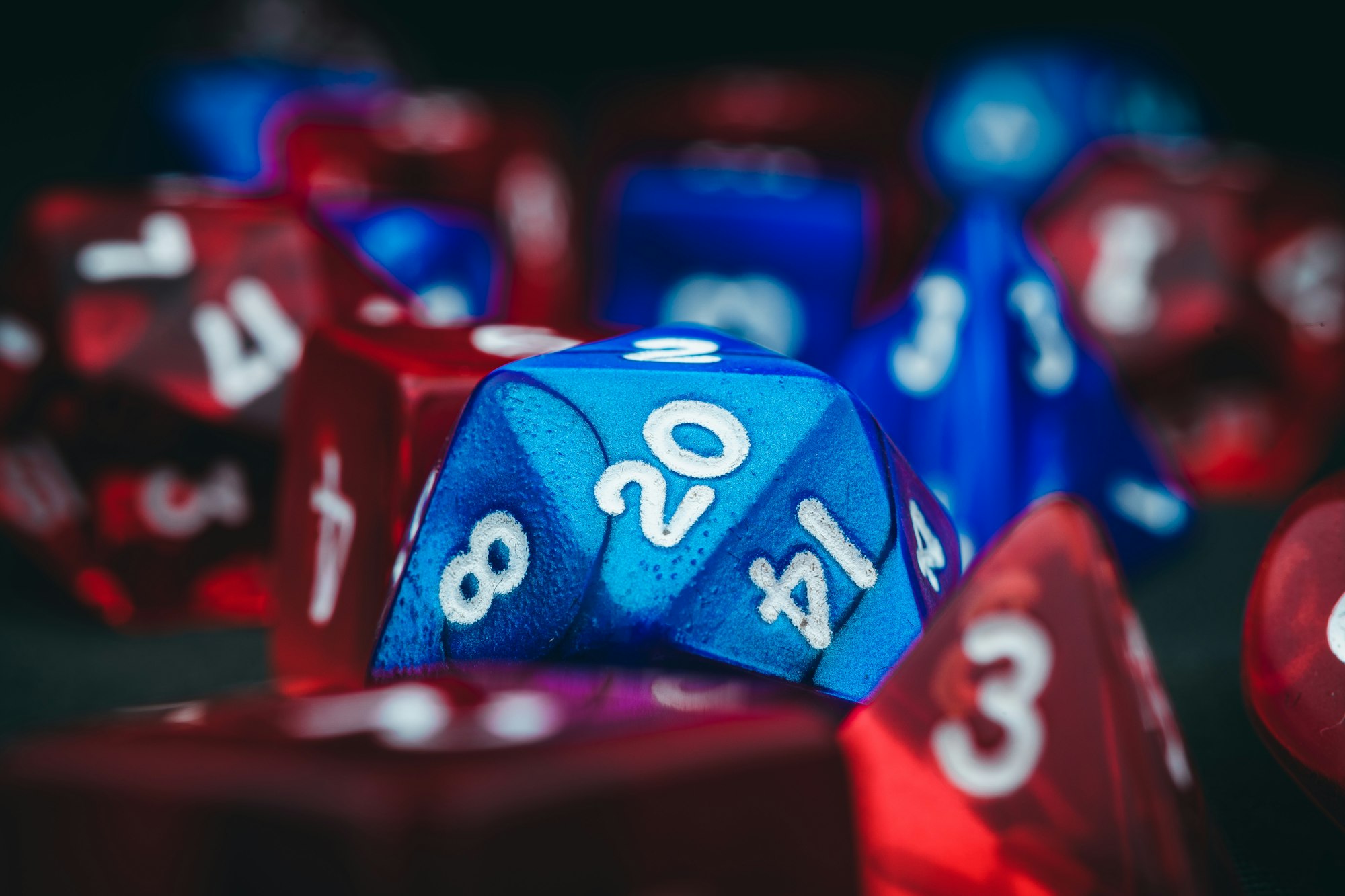
In this next part of the character sheet series, I’m breaking down the most complicated part of building a character: spells.
Spells are somewhat iconic in D&D; who hasn't made a “just fireball” joke once or twice, right? They can change how combat is played, how roleplay plays out, or be reskinned and re-flavored to fit any character's story or aesthetic. They’re part and parcel of the experience, and make the fantasy settings really seem fantastic.
As with any other part of the game, there’s lore and special mechanics associated with magic, so let’s dive into this and learn how it works, shall we? Here’s what you need to know about magic and spellcasting in Dungeons and Dragons 5th Edition.
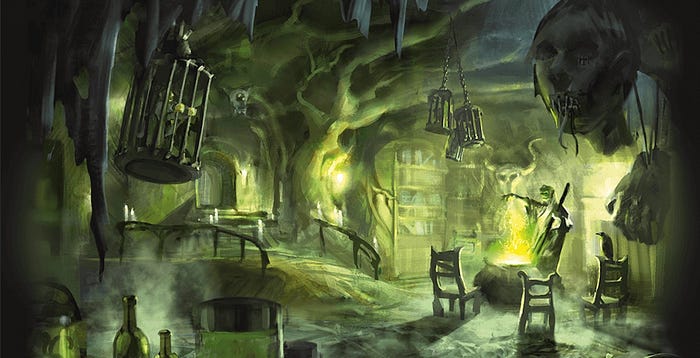
Magic in D&D — A Brief Introduction
One of the core parts of Dungeons and Dragons is, of course, magic. Magic in this game means anything that can’t be achieved physically — and that’s quite a few things, considering the usual setting for these games is quasi-middle-ages with very little in the way of technological advances.
And…well, it’s fantasy! What’s fantasy without a little magical flair?
Magic takes lots of forms depending on which world you’re playing in. For instance, in the Forgotten Realms setting, magic is controlled by the Weave, a layer of magic protected and manipulated by the goddess of magic, Mystra. All the magic in that setting stems from that, and when something messes with the Weave, things go really wrong.
It might be very different in other settings (in a homebrew world I’m currently playing in, magic comes from asteroids that pound into the planet regularly!), but regardless of where the magic comes from, it still follows certain rules.
The Kinds of Magic
There are eight schools of magic that a spell can fall into.
- Abjuration magic has the job of stopping other magic. These are your blocking, banishing, dispelling, and protection magics.
- Conjuration magic…well, it conjures things! This magic summons things out of nowhere, which can be very fun if done right.
- Divination magic is magic that gets you information. It’s used to find out more about the world around you, even, occasionally, to the point of getting rules knowledge that your character probably wouldn’t know.
- Enchantment magic is usually used to affect the mental and emotional states of monsters and other beings. This magic, according to the official rules, can be used to “bewitch the violent to lay down their arms and charm the cruel into showing mercy.” That is if you’re a good guy.
- Evocation magic calls forth the power of the elements — air, fire, water, and air. Sometimes it even calls up elemental beings to aid the caster!
- Illusion magic beguiles the senses into believing whatever the caster wants them to believe. It can be incredibly difficult to detect and effective even at very low levels.
- Necromancy is…well, you know what this one is. Use death to your advantage! (Moral quandaries may apply).
- Transmutation magic is the art of changing one thing into another thing. It’s the modification of matter to match your needs.
Every spell and spell-like effect falls into one of these categories, meaning that you can tell a lot about a trap or curse if you can tell what school of magic it’s being affected by.
Most casters can use spells across all schools, but players might challenge themselves to forgo certain schools for roleplay reasons. Would your Life Domain Cleric really want to use Necromancy? Would a scholar of truth and reason use Illusion magic? It can make for some very fun variations and opportunities for character growth.
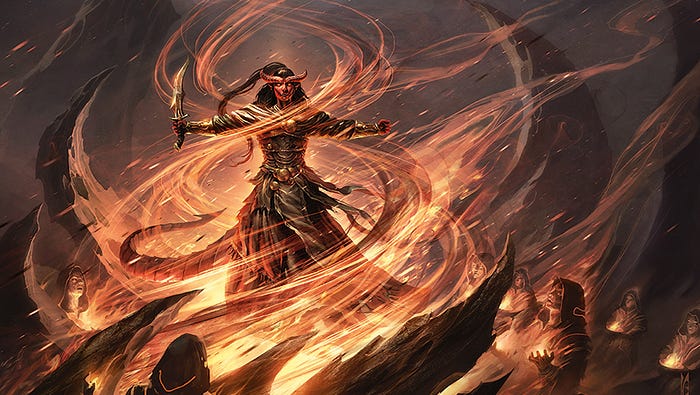
Where Magic Comes From
Magic generally comes from one of two places: innate or gifted.
Innate magic is magic that a character is born with, that comes from their blood. This is the kind of magic involved in certain class features, like Air Genasis being able to cast Levitate a couple of times a day. It’s also how Sorcerers gain their abilities.
The catch with innate magic is that it’s pretty set. It doesn’t upgrade with you (unless you’re a Sorcerer, and even that’s limited) and you can’t swap it out for anything else. What you have is what you get, and that’s that, like it or not.
That’s where gifted magic comes in. Gifted magic is, as the name implies, magic that is gifted to a character from an outside source. Clerics have magic because it was gifted to them by their deity, Warlocks have magic because it was gifted to them (usually with a catch) by their patron, and Wizards have magic because it was “gifted” to them by study.
This kind of magic can be swapped and adapted to a character’s needs. Unfortunately, it means that they’re at the whim of someone else who may choose to take their gifts back. That, or they have to spend a VERY long time studying and practicing before they can cast anything — which is hard to do when you’re a traveling adventurer.
Neither kind of magic is necessarily better or worse; both versions end up with their pros and cons that you should consider when creating your character. Innate magic can be a fun part of your backstory. Why are they powerful? Who was their ancestor? How did the magic get in their blood? Gifted magic can give you another character to roleplay against. Is their patron or deity super involved? Are they tasked with some quest to keep their magic? Are they just a massive nerd?
Deciding where your character’s magic comes from is a big part of deciding how they’re going to use it.
How Magic is Cast
Magic is cast in a relatively simple way mechanically. Each spell has a specification for how long it takes to cast and what you need to cast it.
The amount of time it takes can either be described in terms of hours or, for very high-level spells, days, or it can be described in terms of combat time. By that, I mean a spell — usually an attacking or buffing/debuffing spell — will usually indicate whether it can be cast as an action, bonus action, or reaction. There are also spells that can be cast instantaneously.
Beyond that, the only other things you need to know about how spells are cast are the components. Components are the things you need or need to be able to do in order to cast spells, and they come in three categories.
- Verbal components are the words or sounds you need to make.
- Somatic components are the movements you do.
- Material components are the ingredients that are part of the spell.
Now, these can be avoided some of the time. The Metamagic Adept feat allows you to bypass Verbal and Somatic components, and a spellcasting focus allows you to skip out on the material components. But you may not want to do that all the time; components can make for some really fun flavor mechanics for your character’s magic.
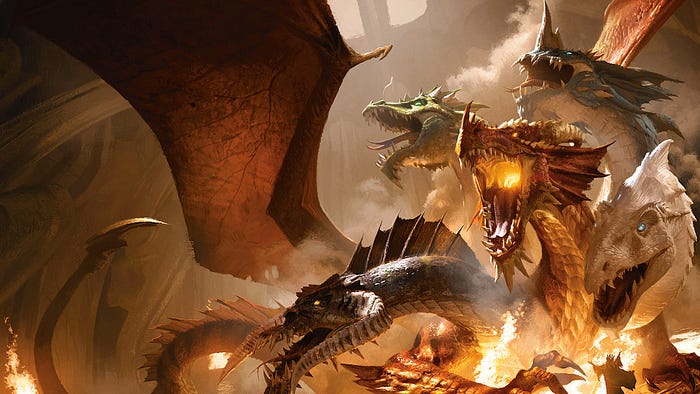
Spell Levels
Spells are organized into levels, which range from 0 to 8. These levels indicate both the power it takes to cast the spell and the output it has.
For instance, level 0 spells — called Cantrips — are garden variety magic. They’re usually utility spells that can cause minor sensory effects, help you do chores, or do minor damage. You can cast these spells as many times as you want without penalty, but they’re not very strong. That being said, sometimes Cantrips are all you need to make the difference between life and death.
Some of the most popular Cantrips are:
- Mage Hand. This spell lets you create a spectral hand that can lift, pull, push, or move anything that’s less than 10 pounds and less than 30 feet away from you.
- Guidance. This spell gives a character an extra d4 toward an ability check (the number of times this has saved my characters is astounding).
- Mending. This spell lets you put any inanimate object back to its original state. Excellent for fixing broken weapons or torn clothes.
- Eldritch Blast. This does exactly what you think it does — a beam of eldritch energy that does 1d10 force damage.
- -Prestidigitation and Thaumaturgy. Different spells, but they do similar things. These Cantrips let you magically clean clothes, warm things up, and make neat visual and auditory effects. They’re popular with Bards.
Now, I could talk forever about the spells leveled 1–8, because there’s just so much variety, but I think we’ll just cover the basics here.
Spells stronger than Cantrips have limited uses. You’ve got spell slots or a set number of times you can use a spell of a certain level. Once you use up those slots, you have to take a rest (short or long, depending on the spell, but we’ll get to that in a later part) before you can use them again. You gain spell slots — in higher spell levels — as your character levels up.
Spells get more powerful the higher they are in level. For instance, a level 1 spell might cause a person to be charmed for an hour, while a level 8 spell might cause a person to be charmed forever. You can also upcast spells, or cast them at a level that’s higher than their original listing for greater effects.
Getting and Setting Your Spells
Okay, okay, I can hear you yelling, “BUT HOW DO I SPELLS?!” Calm down. We’re finally at that part. Deciding your spells is relatively simple; in your sheet, there’s a whole page dedicated to magic.
The Spell Page
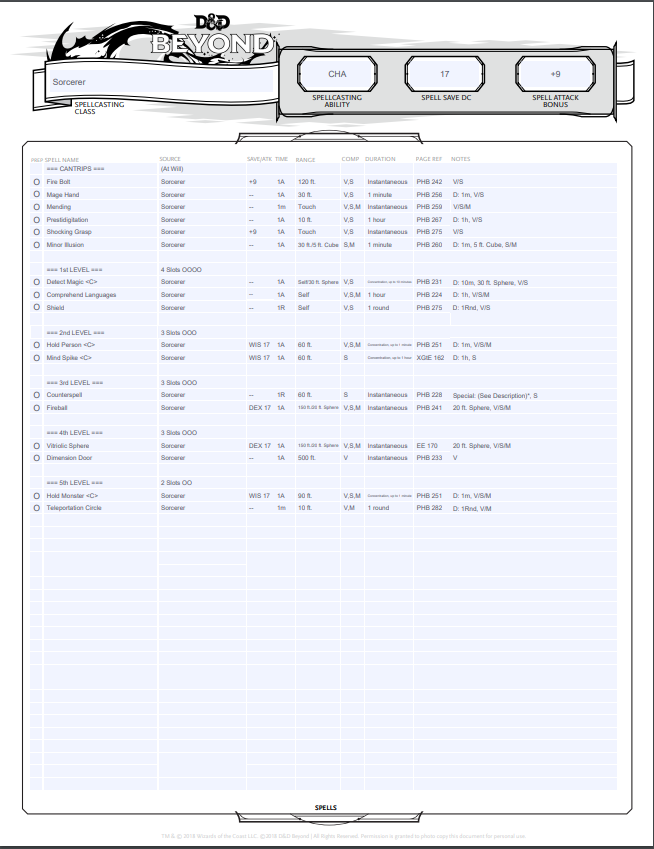
Here’s an example of a Spell page from a character of mine. Erdin is a Dragonborn Sorcerer. He’s level 10, so he’s got slots up to 5th level. He’s also a Draconic Soul sorcerer, so any fire damage he does is buffed up (more on that in another part).
See that box in the upper right? With the three little boxes? Those are, in order, your:
- Spellcasting ability. This is the stat you use to cast your spells. Since Erdin is a Sorcerer, he’s using Charisma.
- Spell save DC. This is the number that a target has to beat when rolling against your magic. Erdin’s is pretty high at a 17; you’re not likely to get out of whatever effect he’s causing.
- Spell attack bonus. This is the modifier you add when rolling an attacking spell. Erdin has a +9 to hit, meaning he adds 9 points to a d20 roll when trying to attack something.
After that, all of the spells are listed from the lowest level to the highest, alongside how many slots you have for each level. There’s space to list the save DC, the time it takes to cast, the range it can hit, necessary components, how long it lasts, and any notes you have (including where the spell comes from).
The Spell Lists
Strangely enough, not all classes have access to the same spells. There are unique spell lists for each full casting (or, using magic as a primary play component) class:
- Bard
- Cleric
- Druid
- Paladin
- Ranger
- Sorcerer
- Wizard
- Warlock
These lists are tailored to each class’s story and playstyle. For instance, there are a lot of healing and divine energy spells on the Cleric list, and a lot of nature-based spells on the Druid list.
When making your character, if you’re a full caster, you pick from the list of your class. If you’re a not-quite caster, such as a subclass of a martial class that can use magic, the details of your class will tell you which list to use. For instance, an Arcane Trickster Cleric will use the Wizard spell list, as they’re equally good at stabbing and summoning.
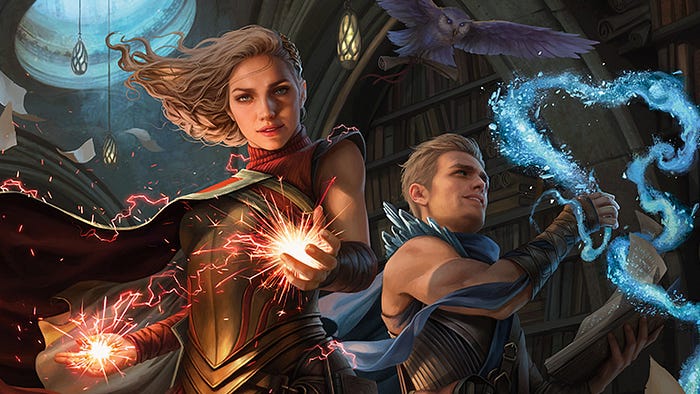
Learning New Spells and Swapping Out Spells
Each class starts with a different number of spells at level one and has different rules for learning new ones as you go along. There are tables for each class’s spell progression in the PHB, but here’s the rundown:
- Bards start with 2 Cantrips and 4 Level 1s, with 2 Level 1 spell slots. They learn a new spell (and sometimes a new Cantrip) with every level.
- Clerics start with 3 Cantrips and 2 Level 1 spell slots. Technically, as a Cleric, you know all of the spells on the Cleric spell list already, but you have to prepare them to cast them. The number of prepared spells you can have per day is equal to your Wisdom mod plus your level.
- Druids start with 2 Cantrips and 2 Level 1 spell slots. As with Clerics, Druids know all the spells on their list but have to prepare them in order to cast them, using the same rules for the number of prepped spells per day.
- Paladins, weirdly, don’t have any magic until second level, when they get 2 Level 1 spell slots. Since they rely on martial attacks as well as magic, their magic develops a bit more slowly. They prep spells, just like Clerics and Druids, but use Charisma rather than Wisdom to determine how many they can prep.
- Rangers also don’t get any magic until second level, when they get 2 Level 1s and 2 Level 1 spell slots. They learn more spells as they level up according to their table.
- Sorcerers start with 4 Cantrips and 2 Level 1s, as well as 2 Level 1 spell slots. They learn a new spell (and sometimes a new Cantrip) with every level.
- Warlocks start with 2 Cantrips and 2 Level 1s, but only get 1 Level 1 spell slot. They learn a new spell (and sometimes a new Cantrip) with every level.
- Wizards start with 3 Cantrips and 2 Level 1 spell slots. They learn new Cantrips as they level up, but the rest of their spells are in a spellbook, which, at level one, has 6 Level 1s in it. Wizards can learn a new spell pretty much whenever they want by spending enough time and money to write it down. They also prepare spells, using the same rules as before but with their Intelligence mod affecting their total prep number.
The classes that prepare spells can swap them out after a rest (usually a short rest) for any other spell on their list, which is pretty useful as it lets you customize your spell list for specific encounters and missions. Additionally, the classes that don’t prep — Bards, Sorcerers, and Warlocks— can swap their known spells when they level up.
Up Next — Combat!
Spellcasting is ridiculously fun but can be extremely confusing for new players. If you’re reading this and considering making a Wizard for your very first character, I say go for it!
You can read all of the books and guides in the world but your best bet for learning to play a spellcaster is to just…play. Yeah, you’ll probably muck it up for a bit and take forever in combat as you look for the effect you want, but you’ll also get to play a really fun and versatile character with awe-inspiring abilities.
Now we’re getting into the hard stuff! In the next part of this series (how many parts am I going to need?!), I’ll cover all things combat — from initiative to taking a turn and how it all ends.
Happy playing!
